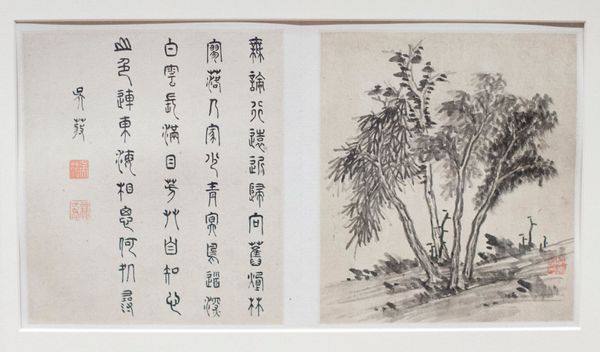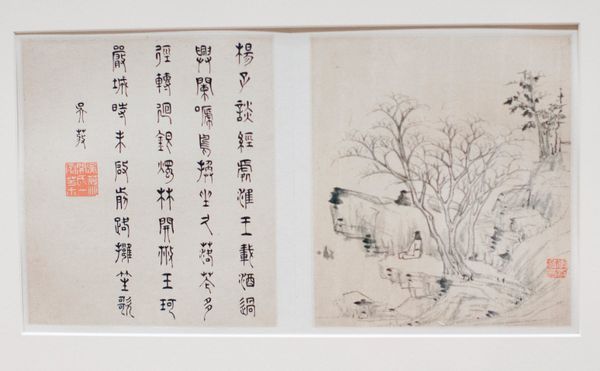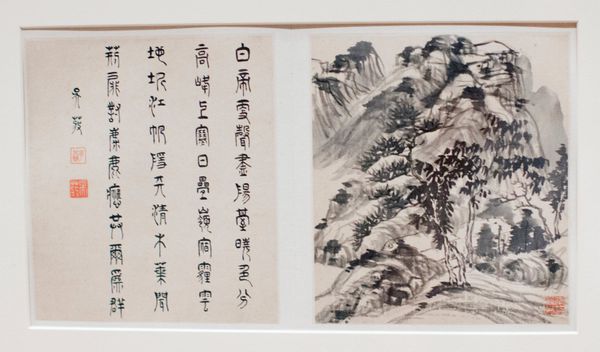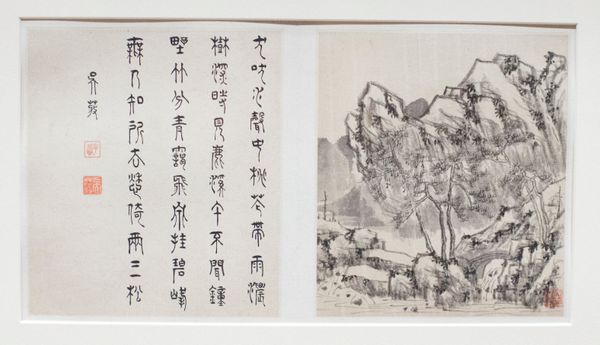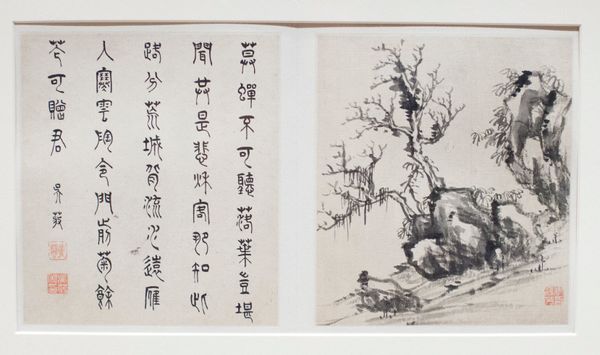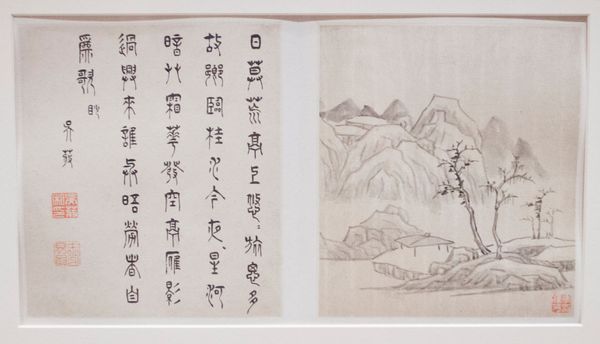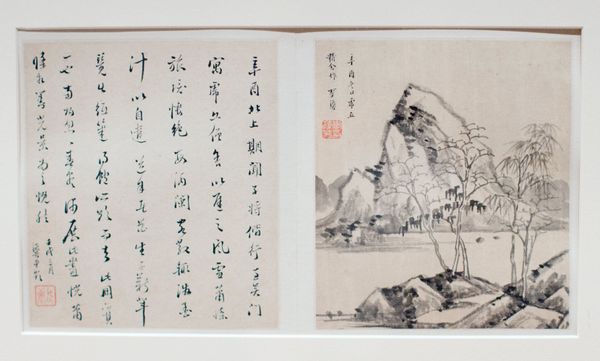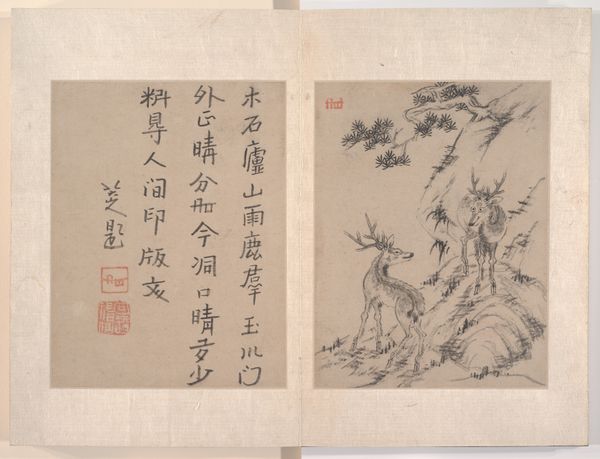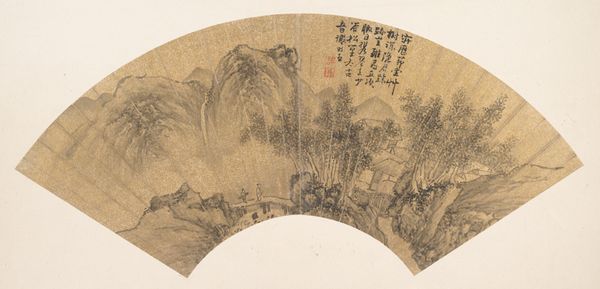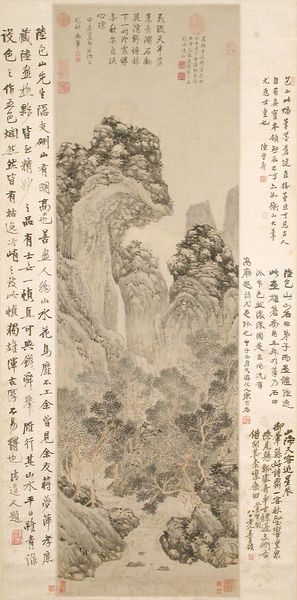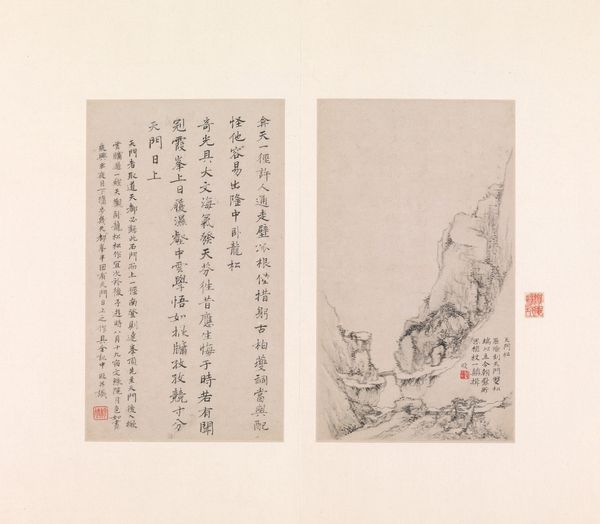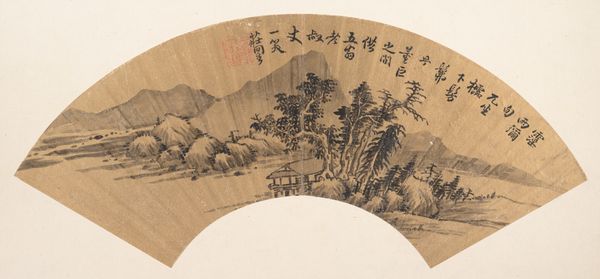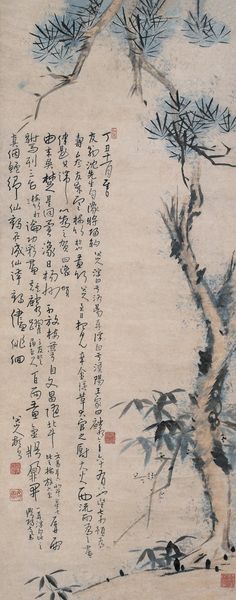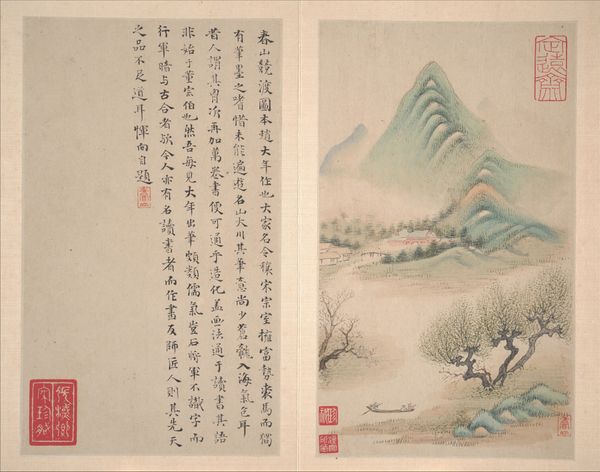
painting, paper, ink-on-paper, ink
#
ink painting
#
snowscape
#
painting
#
asian-art
#
landscape
#
paper
#
ink-on-paper
#
ink
#
china
#
calligraphy
Dimensions: 7 1/8 x 6 1/4 in. (18.1 x 15.88 cm) (image, each)10 7/8 x 16 3/4 in. (27.62 x 42.55 cm) (mount, overall)14 x 18 in. (35.56 x 45.72 cm) (mount)
Copyright: Public Domain
Curator: These "Two Album Leaves from a Landscape Album" by Li Liufang, dating to 1621, are a compelling example of literati painting. The monochrome ink on paper creates a world that is both serene and deeply intellectual. Editor: They are beautiful, but melancholic. I’m immediately drawn to the stark contrast and the overall impression of stillness, despite the detailed brushwork. There is so much textual information that I am unable to understand, though! How do you interpret this work, especially considering its cultural context? Curator: It's crucial to understand that literati painting was often a form of resistance, a space where artists could express dissent or critique social and political issues through seemingly apolitical landscapes. Consider the calligraphic inscription. Are these poems or commentary providing insights into the artist’s own sociopolitical awareness or dissatisfaction? Editor: It makes me wonder about Li Liufang’s position in society at that time. He, among other scholars of the time, was later actively involved in rebellion, yet created such moving art pieces? It’s a paradox. Curator: Absolutely. It makes you think about who gets to represent a society and what voices were historically stifled. Did landscape and calligraphy provide a safe outlet to contemplate nature during societal shifts, when scholars might fear repercussion for any form of direct comment? Editor: I now see that seemingly passive scenes such as these become incredibly charged when examined under such perspectives! They allow us to explore nuances that might otherwise remain hidden. Curator: Exactly! It encourages us to think about art as a form of coded language, subtly challenging dominant narratives. We may not unlock any coded narratives, but the important is the ability to situate the artwork in this frame of mind. Editor: This exploration has definitely enriched my perspective, and my ability to understand the visual composition better.
Comments
minneapolisinstituteofart almost 2 years ago
⋮
Li Liufang was a painter of the late Ming dynasty. He painted mostly in small formats, playing with ink and trying to channel the creative essence of certain old painting masters rather than copying their formal patterns. Most of his works look like improvised sketches, executed with fresh spontaneity. This album contains examples of Li’s early style—spare, linear compositions, in which he used less ink for thinner, fainter lines—as well as his later style, with its rich, inky brushwork.
Join the conversation
Join millions of artists and users on Artera today and experience the ultimate creative platform.
